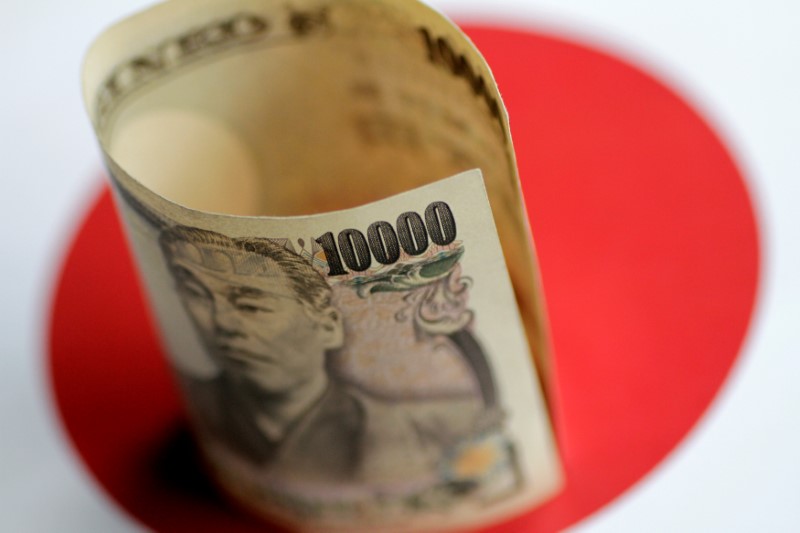
A Japan Yen note is seen in this illustration photo taken June 1, 2017. REUTERS/Thomas White/Illustration
May 3, 2018
By Patturaja Murugaboopathy and Gaurav Dogra
(Reuters) – The specter of slower global economic growth presents another threat for Asian currencies, many of which are already under pressure from rising U.S. yields and capital outflows.
Recent economic data showing a cooling in Asian exports and in business activity in the United States and Europe, coupled with the risk that trade tensions will further undermine global supply chains, poses a risk to Asian currencies which had held up last year even as the Federal Reserve raised policy rates.
“The strengthening in the global economy since second half of last year has supported Asian currencies and that was one of the reasons why they were largely able to brush off higher U.S. yields last year,” said Khoon Goh, head of Asia research at ANZ Banking Group.
“But with early signs that we could be seeing a peak in growth with March PMI numbers largely disappointing, there is a concern that ‘if the growth start to slowdown, then that is one less supportive factor for Asian currencies’.”
Emerging Asian currencies performance: https://reut.rs/2rfEyvn
Moreover, unlike last year, when there were bursts of volatility in Treasury yields, this year’s sustained rise in yields could force dollar borrowers to pull money out of emerging markets. That could embolden regional currency bears.
The U.S. 10-year Treasury yield breached the psychological level of 3 percent last month. However, its 20-day volatility is hovering near 8-year lows of 15.86 percent hit in April.
“At the beginning of the year, increased volatility discouraged foreign investment in U.S. bonds, including from Japan, but smoother rises in U.S. yields may attract foreign demand more easily,” said Yujiro Goto, senior FX strategist at Nomura in a note.
“As long as rises in foreign yields are smooth, further upside in dollar-yen and euro-yen is possible.”
The yield spread of Japanese and Thai bonds over U.S. Treasuries narrowed to a 11-year low last week, while Malaysian bond’s spreads are hovering near a 4-1/2 year low hit in March.
Asian bonds yield spreads over U.S.: https://reut.rs/2I5OtgB
With the Fed being the only major central bank set to raise interest rates in this quarter, most analysts expect further upside in U.S. bond yields.
The dwindling yield premium in emerging markets is already driving foreigners out of Asian bond and equity markets.
Data from seven Asian stock exchanges showed foreign outflows totaled about $3.5 billion in April, extending the year’s tally to $8.2 billion. South Korea, India and Indonesian markets led the outflows last month.
Foreign investments in Asian equities: https://reut.rs/2rfFrUJ
Wei Liang, FX strategist at Mizuho Bank expects $1 billion worth of foreign outflows from Malaysia, Indonesia and Thailand bond markets for every 10 basis point increase in U.S. 10-year Treasury yields, based on his regression analysis.
Foreign flows into Asian bonds: https://reut.rs/2I1R1N1
Rising crude oil prices are a risk for currencies of the two net oil importers, India and Indonesia, which also have among the highest current account deficits in the region.
ANZ’s Goh expects a varied performance for regional currencies for the rest of the year.
He favors the Singapore dollar due to the central bank’s recent tightening and the Thai baht for its higher current account surplus.
“Those with deteriorating external imbalances, like India in particular, will continue to underperform,” Goh said.
Asia exports: https://reut.rs/2JNrK6c
(Reporting by Patturaja Murugaboopathy and Gaurav Dogra; Editing by Vidya Ranganathan & Shri Navaratnam)

